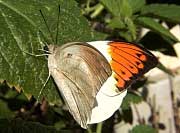 |
Family Nymphalidae – Brush-Footed Butterflies Butterflies Home | Butterfly Index | Skipper Butterflies | Moths | Moths Index This family incorporates the admirals, fritillaries, checkerspots, crescentspots, anglewings, leafwings, painted ladies, tortoiseshells and longwings. Live butterflies photographed in the wild in the USA. |
HackBerry Butterfly demonstrates the "four-legged" stance of the Nymphalids |
|
Family Nymphalidae – Brushfoots or brush-footed butterflies encompass approximately 3,000 species worldwide, of which 160 or so live in or visit North America. This is a very diverse family of butterflies, and they occur everywhere except the polar ice caps. Their unifying characteristic is the reduced forelegs of both males and females. These vestigial forelegs are nearly useless for walking and give rise to the family's common name.
The habit of holding the forelegs close to the body is shared with many other insects, including some bumblebees, flies, bugs and beetles. I assume the evolutionary device will eventually lead many species to lose the appendages completely. |
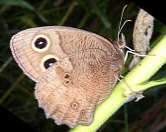 Common Wood Nymph |
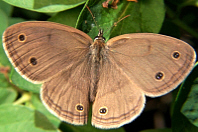 Little Wood Satyr |
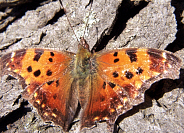 Gray Comma |
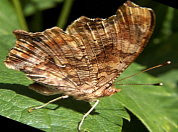 Eastern Comma |
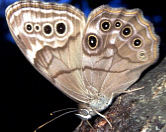 Northern Pearly Eye |
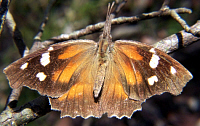 American Snout |
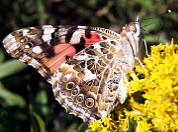 Painted Lady |
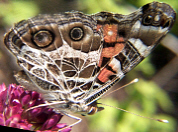 American Painted Lady |
Buckeye Butterfly – Junonia coenia |
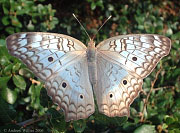 White Peacock |
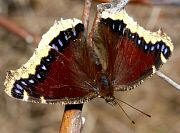 Mourning Cloak |
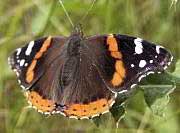 Red Admiral |
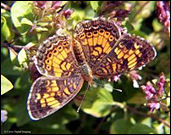 Pearl Crescent |
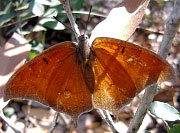 Goatweed Leafwing |
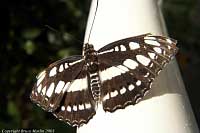 Common Sailor Butterfly |
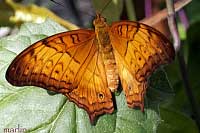 Cruiser Butterfly |
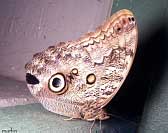 Owl Butterfly |
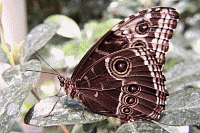 Common Morpho |
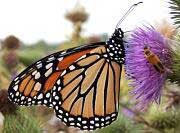 Monarch |
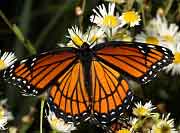 Viceroy Butterfly |
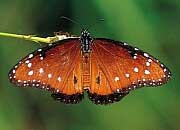 Queen Butterfly |
|
Subfamily Danainae – The Milkweed Butterflies & Glasswings consist of 400 species, only four of which reside in North America. The monarch is the most famous of this family, known for its soaring flight and yearly migration. Most species' caterpillars feed on the toxic milkweed plant, imparting a bitter flavor to the adult butterfly which is distasteful to birds. The viceroy butterfly is not a member of this family, but mimics the monarch. |
||
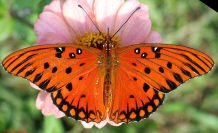 Gulf Fritillary |
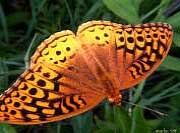 Great Spangled Fritillary |
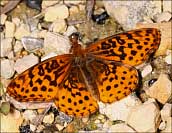 Meadow Fitillary |
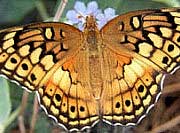 Variegated Fritillary |
| Subfamily Heliconiinae – Heliconians and Fritillaries can be divided into 45-50 genera and were sometimes treated as a separate family (Heliconiidae) within the Papilionoidea.
Most longwings are found in the Tropics, particularly in South America; only the Argynnini are quite diverse in the Holarctic. Especially tropical species feed on poisonous plants, characteristically Passifloraceae vines, as larvae, becoming poisonous themselves. The adult butterflies announce their acquired toxicity with strong aposematic colors, warning off would-be predators. There are several famous cases of Batesian and Müllerian mimicry both within this group and with other butterflies. Other common foodplants are Fabaceae (which also contain several toxic species), and particularly among northernly species, Violaceae [4]. |
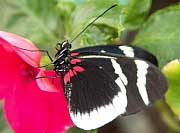 Eleuchia Longwing |
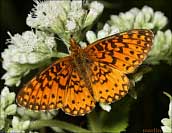 Silver-Bordered Fritillary |
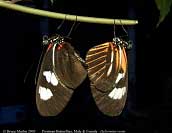 Postman Butterfly |
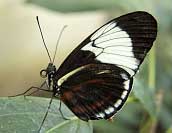 Cydno Longwing |
References
|
| Tree Encyclopedia / North American Insects & Spiders is dedicated to providing scientific and educational resources for our users through use of large images and macro photographs of flora and fauna. |
|
Order Lepidoptera, which contains both butterflies and moths, includes at least 125,000 known species including 12,000 in North America. Butterflies are revered for their brightly colored wings and pleasing association with fair weather and flowers. |

